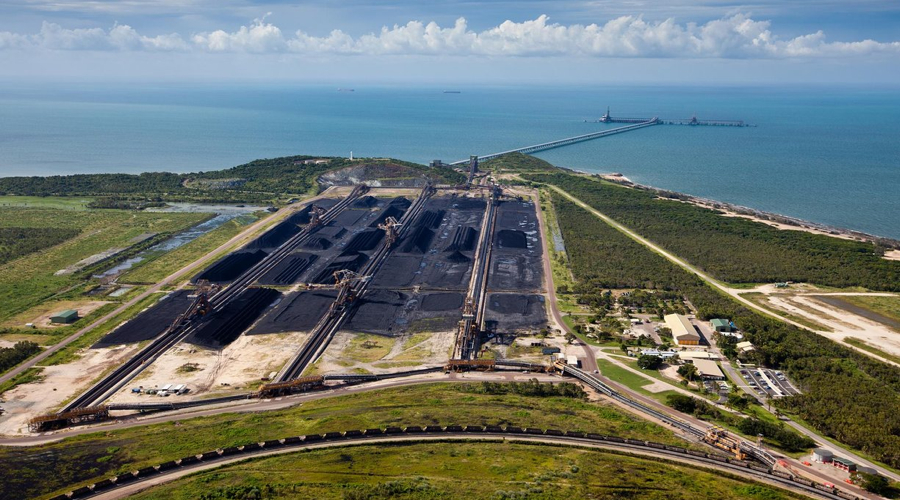Adani’s coal hopes look increasingly isolated as BHP joins naysayers — opinion

How’s this for a study in contrasts: One of the world’s biggest coal miners effectively says the industry is dying just days after Australia’s opposition party suffered a shock election loss, partly blamed on its failure to unambiguously back a new coal mine.
BHP Group Chief Financial Officer Peter Beavan told a strategy briefing on Wednesday that the world’s biggest mining company has “no appetite” to grow its thermal coal assets and that the polluting fuel will be phased out “potentially sooner than expected”.
To be sure, Beavan was talking about the type of coal used mainly in power generation, and this forms a tiny part of BHP’s total coal portfolio, which is dominated by coking coal used mainly for steelmaking.
If the 8-10 million tonnes a year project does proceed, it would be the largest new coal mine project globally at an expected cost of at least $4 billion
BHP’s only thermal coal assets are the Mount Arthur thermal coal mine in Australia’s New South Wales state, and a one-third stake in Colombia’s biggest producer, Cerrejon, valued at about $2.5 billion.
The company’s joint venture with Japan’s Mitsubishi Corp in Australia’s Queensland state is the world’s largest shipper of coking coal.
Beavan’s comments came days after the opposition Labor Party lost an election they had been overwhelmingly expected to win, with a contentious coal mine playing a part in the defeat.
The Labor opposition failed to unseat the conservative government of Prime Minister Scott Morrison largely because it lost seats in Queensland state, home to the Carmichael thermal coal mine being planned by India’s Adani Enterprises.
If the 8-10 million tonnes a year project does proceed, it would be the largest new coal mine project globally at an expected cost of at least $4 billion.
The failure of Labor’s bold climate action plans to resonate with Australian voters, particularly those in regional areas with strong mining sectors, has given the Adani project a new lease of life.
The Labor premier of Queensland state, which also has to approve the mine in tandem with the federal government, appeared to read the election tea leaves very quickly, calling on Wednesday for Adani to sit down with the state’s regulator to work out a timetable for final approvals.
But even if Adani does secure final approvals, the mine is still facing serious challenges.
Show me the money
It will no doubt be subject to a sustained campaign by environmental activists, but even this may prove to be the least of its worries.
Adani has battled to secure financing for the mine as more and more banks and development institutions pull back from the coal mining industry, partly to improve their green credentials but also because of the rising risk of coal assets becoming stranded, while still owing millions of dollars.
It does seem that the backers of the Adani mine seem to be taking a risk that virtually nobody else is now prepared to
Adani has said it can finance Carmichael off its own balance sheet, and assuming it can, the mine still faces challenging economics, given the current price for the type of thermal coal it produces.
Adani estimated in January that total costs of bringing the coal to port via rail would be about A$54 a tonne ($38).
Based on current market prices for other types of coal similar to Carmichael’s 5,000-5,800 kilocalories per kg coal, it’s possible that Adani could enjoy a margin of as much as $15 a tonne.
But this doesn’t include the cost of repaying the capital, or holding back funds for rehabilitating the mine once it reaches the end of its life.
There are also questions over whether Adani can actually mine and transport its coal, and pay all royalties for just A$54 a tonne, as this figure seems low when compared to other similar mines in Queensland, the majority of which are closer to ports than Carmichael.
It does seem that the backers of the Adani mine seem to be taking a risk that virtually nobody else is now prepared to.
If financing is secured, whoever provides it runs the risk of not getting repaid.
The victorious Liberal Party government is risking a prolonged and damaging fight between environmentalists and pro-mining groups, one that threatens to further divide Australia along climate lines.
The regional areas in Queensland that gave their votes to Liberal government run the risk that the mine fails to generate the level of employment they hope for, and if it runs at a loss it could become a millstone for local and state governments as they will be tempted to throw money at it to keep it going.
(By Clyde Russell; Editing by Joseph Radford)
More News
Trump wants Ukraine’s minerals. But what exactly is up for grabs?
Various reports have suggested that Ukraine has mineral deposits worth upwards of $10 trillion.
February 18, 2025 | 12:57 pm
{{ commodity.name }}
{{ post.title }}
{{ post.excerpt }}
{{ post.date }}


Comments